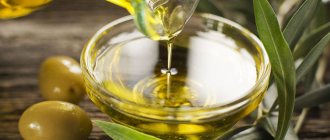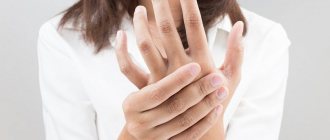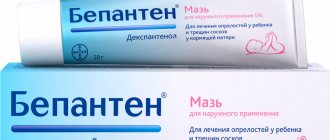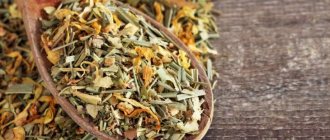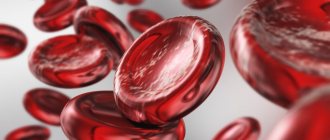Dry and cracked heels are a common skin defect. Occurs more often during hot periods, less often in winter. Diseases are also causes. Cracks not only worsen the appearance, but also provoke unpleasant pain. Creams will help to cope with this problem; they perfectly nourish, moisturize the skin and promote its regeneration.
When to use
It is necessary to use cosmetics and medications against dry and cracked heels if the following symptoms are observed:
- Severe dry skin. With this type of dermis, the heels are more susceptible to the development of corns, cracks and infection.
- Thickening of the epidermis. Hyperkeratosis is most often accompanied by skin wounds.
- Pain in the feet when walking.
- Burning and severe itching.
- Unpleasant smell.
- Bleeding.
If you have one or more of the above signs, you should use anti-crack cream.
Why are they formed?
Many people believe that only older people have cracks in their feet. Indeed, 25–30% of people over 40 have them. But they also occur in men, women younger than this age, and even in children.
The causes of cracks in the feet are a violation of the hydrolipid balance of the skin, a decrease in the production of collagen and elastin, and a decrease in the protective fat layer. Externally, this manifests itself in dryness, thickening, loss of elasticity, and firmness. Every day, the feet experience enormous pressure to support the body in a standing position, controlling balance when walking or running. With such a load, the skin inevitably stretches and expands. If it is dry and loses elasticity, then the likelihood of rupture when stretched under body weight will increase.
In addition to natural age-related changes, cracks in the skin of the feet are provoked by the following internal and external factors:
- wearing tight shoes;
- fungal infections, dermatitis;
- foot deformities, flat feet, heel spurs;
- poor hygiene, insufficient hydration or nutrition;
- skin contact with dry, hot air, salty sea or chlorinated pool water, ultraviolet rays;
- poor nutrition, leading to a deficiency of vitamins A, E, group B, and microelements important for skin health;
- endocrine disorders, including thyroid disease, diabetes;
- metabolic disorders;
- excess weight, which exposes the skin of the plantar part of the foot to excessive pressure and stretching;
- problems with blood circulation in the lower extremities, causing a lack of tissue nutrition;
- walking barefoot on hard surfaces (sand, stones, asphalt).
Cracks on the feet are a consequence of dry and thickened skin, or otherwise keratosis. Keratosis develops when keratinized or dead cells of the upper layer of skin do not have time to exfoliate and become layered on top of each other. In severe cases, the layer of thickened skin is 1–2 cm.
What must be present in the cream
Important components of care products for eliminating severe dryness and cracked heels are:
- Essential oils of shea, jojoba, coconut and lavender. Nourish and moisturize the skin.
- Salicylic acid and urea. Prevents the development of corns, calluses and cracks.
- Propolis. Forms a protective film, preventing moisture loss and exposure to adverse environmental factors.
- Aloe, keratin, calendula extract. Accelerate the regeneration of the epidermis.
- Betaine. Moisturizes and softens the skin, eliminating hyperemia and other signs of irritation.
- Vitamin complexes.
- Panthenol. Deeply nourishes all layers of the dermis, increases the degree of its regeneration.
- Glycerin. Restores water balance, heals cuts, cracks and effectively moisturizes the skin.
Active components
When purchasing a product, pay attention to its composition. Most often, substances with moisturizing and healing properties are used as active ingredients:
- Urea or carbamide is an effective humectant that can also act as a keratolytic.
At a concentration of more than 20 percent, urea destroys protein bonds in keratinized areas of the skin. Many scales form on its surface, which are removed with pumice and a file, and even washed off with a stream of water. Types of keratolytics used in pedicure: a complete guide for masters - Panthenol is a moisturizing component that can act in the deep layers of the skin. This is the most famous stimulator of regeneration - under its influence, cracks heal much faster.
- Glycerin – retains moisture in dry skin and also promotes the healing of cracks and scratches.
- Extracts of medicinal plants - plantain, celandine, calendula, juniper.
They heal breaks and improve the general condition of the epidermis, saturating it with bioactive substances and protecting against infection. feet. Medicinal plants for the beauty of nails and skin
How to choose the right cream
When purchasing a medicinal or cosmetic product to combat wounds and dry skin on the heels, you must take into account some criteria:
- Therapeutic property. Preference should be given to creams that have regenerative, softening, protective and nourishing effects.
- Hypoallergenic and natural composition. It is advisable to buy products based on natural ingredients.
- Expiration date.
- Method of application. You should read the attached instructions for the product. The application of certain types of creams requires some processing of the skin for the best therapeutic effect.
Pathogenesis
On the surface of the soles the skin is quite thick and has a large number of sweat glands. In those places where the main support of the bones falls, there is a pronounced layer of subcutaneous fatty tissue, which protects the bone from external pressure.
With constant stress, as well as exposure to a number of provoking factors, such as wearing uncomfortable shoes, active physical activity, etc., a response is noted: skin surface cells begin to actively divide. hyperkeratosis develops - thickening of the surface layer of the skin. It becomes less elastic and hard, its properties change, and against the background of this, as well as disturbances in the hydrolipid balance and the quality of elastin and collagen fibers, cracks can develop.
The most effective remedies against dry and cracked heels
Among cosmetic and medicinal products, there is a huge selection of products to combat increased heel dryness and cracking. The best are:
- Vaseline.
- Ciel Parfum.
- Gehwol Med.
- Dexeryl.
- TianDe.
- Calendula ointment.
These products have a unique composition and effectively treat cracked heels, softening and moisturizing the skin of the feet.
Classification
Depending on the characteristics of the disease, there are two types of cracks:
- Superficial (epidermal) - they develop within the epidermis and, healing, disappear without a trace.
- Deep (epidermal-dermal) - develop in the upper layers of the skin, localized in the epidermis and dermis. After the cracks have healed, scars may remain. Very often, deep formations cause pain and bleed. Bleeding formations are called ruptures.
Dexeryl
An excellent remedy for treating dermatological problems. Made in France. Sold in small tubes, cost about 600 rubles.
The basis of the cream is glyceryl and other useful components. Due to this, deep nutrition and hydration of the heels and regeneration of skin cells are observed.
Apply the cream 1-2 times a day, thoroughly rubbing into the damaged area. The duration of the course is determined until the wounds are completely healed.
There are almost no contraindications to the use of the product. The only thing is that the cream is not used for individual intolerance to substances.
Cosmetic
Complex from Gehwol
The German brand Gevol specializes in solving foot problems. From Gehwol you can select several remedies for complex treatment for cracks.
Fussbad foot bath
The composition includes natural oils of pine, eucalyptus, lavender, rosemary and thyme, which soften rough skin, have an antimicrobial effect and help with healing. The bath time using the product depends on the degree of roughness of the skin and ranges from 15 to 30 minutes. An excellent product for complex treatment and daily care.
It is recommended to use a foot bath during the treatment of cracks of varying depths, as well as to prevent their appearance, at least once a week.
Foot bath recipes
HL Lotion with ceramides
The product, reminiscent of a liquid cream, is absorbed instantly and moisturizes the deepest layers of the skin.
Use as a stand-alone product or after a foot bath. The production uses oat extract, as well as avocado and jojoba oils. But the most important ingredients are ceramides. These substances are always present in the human body, ensuring optimal water-lipid balance of the skin. Thanks to him, she is healthy and copes well with protective functions. It is prescribed both for the treatment of already formed cracks and for prevention. Thanks to its moisturizing properties, the lotion prevents the appearance of ruptures.
Ointment for cracks
Heals tears and wounds and deeply moisturizes the skin due to panthenol in the composition. It is also represented by natural essential oils, bisabolol obtained by extracting chamomile. The product is multifunctional: protects, moisturizes, nourishes the skin, relieves inflammation and eliminates irritation.
To achieve visible results, use the ointment 2 times a day until the problem is completely resolved.
After the tears have healed, the ointment is excluded from care and replaced with a nourishing cream.
Can be used either separately or in combination with a foot bath.
Gehwol products for solving foot skin problems
Doctor Biocon, Foot care cream
Flaxseed, licorice and panthenol quickly heal cracks. The cream is suitable for daily use or after a pedicure.
The product contains natural ingredients, so it has almost no contraindications. You will have to stop using it only if you are allergic to the components of the drug.
To enhance the effect, alternate the care cream with Doctor Biocon balm, which is made specifically for the treatment of chapped feet. The price of the balm is from 90 to 110 rubles.
How to choose foot cream with urea
Scholl, Cream for Cracked Heels
Hypoallergenic cream with urea stimulates skin regeneration and also starts the process of natural healing of cracks. The cream helps get rid of discomfort and has a disinfecting effect. Due to the introduction of vitamin E into the composition, it exhibits powerful antioxidant activity.
Has no smell. The drug should be applied 2 times a day until complete recovery or 3-4 times a week to prevent the formation of ruptures. Not suitable for bleeding cracks.
The greatest effect is achieved when using the cream after treatment with a special Scholl file for cracked heels.
Scholl electric roller file for removing rough skin on feet
Dr. Foot, Cream-balm for cracked heels
Cream-balm with vitamins helps saturate the skin with moisture and beneficial components to start the process of natural regeneration. The first result will appear after 7 days of use - cracks heal, dryness disappears and discomfort disappears.
Prophylactic use of the cream after recovery helps protect the heels from the recurrence of ruptures.
Grandmother Agafya's recipes, Juniper foot cream
Suitable for permanent use, has a pronounced healing effect and prevents the recurrence of cracks. Eliminates excess sweating, which often leads to cracking, by gently drying fabrics. You will be able to see the effect no earlier than after 14 days of daily use.
The main healing component is plantain extract.
Uroderm, Ointment for cracks with urea
The ointment contains urea at a concentration of 30%, being a fairly powerful keratolytic. In addition to urea, the composition includes caring and moisturizing components - panthenol and glycerin. The drug softens the skin and increases its elasticity.
Used as an independent remedy before removing roughness. You can remove keratinized growths 10-15 minutes after applying Uroderm cream using a file or pumice.
To prevent the appearance of cracks, ointment is not suitable - 30% urea can harm healthy skin.
For this reason, after the tears have healed, stop using the ointment and change it to a product with low concentration urea - up to 10%, for example, L'Adeleide "Urea 10%" cream. This will maintain the result, prevent dryness and cracking without harming healthy skin.
Aliexpress, Silicone heel pads for cracks
In a Chinese online store you can find silicone pads that, in addition to fixing the heel in shoes, also heal cracks. Treatment occurs due to mineral oils of jojoba, lavender and rosemary, which are impregnated with the pad. As well as uniform distribution of loads when walking.
You can wear the product no more than 12 hours a day, and before use it is recommended to wash your feet with soap and water. With constant wear for more than 12 hours, air exchange is disrupted, and a greenhouse effect is formed under the overlay, so it is not recommended to use it for prevention.
The price for one pair is about 300 rubles.
Before purchasing, be sure to look at the reviews of a particular seller’s product, since the same product on Aliexpress may differ in quality from different sellers.
Types of foot care creams
Diet
Diet for skin diseases
- Efficacy: therapeutic effect after a month
- Time frame: three months or more
- Cost of products: 1400-1500 rubles per week
Nutrition is one of the important factors for skin health. Therefore, a lack of certain substances in the body, in particular vitamins A , E , etc., can lead to similar problems. To avoid them, the menu should include the following products:
- Fatty fish, liver, greens, carrots - to prevent vitamin A .
- Dairy products, nuts, cereals, eggs, vegetables, fruits - to provide sufficient amounts of B vitamins .
- Citrus fruits, sauerkraut, rosehip drinks are sources of vitamin C.
- buckthorn , seafood are sources of vitamin E.
- Bran, legumes - to provide the body with vitamin H.
Treatment methods for heel cracks
Effective treatment of cracks involves several methods that help to have a comprehensive effect on the skin. These include:
- steaming the skin;
- peelings;
- the use of creams and disinfectants to treat cracks;
- treatment of open wounds.
Special disinfectants help get rid of bacteria and fungus.
Tests and diagnostics
A dermatologist or podologist conducts a survey of the patient and an external examination, during which this condition is easily determined. It is recommended to consult a doctor if no visible improvement is observed after a week of self-treatment. You should also definitely consult a specialist if the tears are more than 1 mm deep.
If the appearance of cracks is associated with other diseases, additional consultations with specialists, as well as the necessary studies, are prescribed if necessary.
Prevention
To prevent the development of ruptures in the feet, it is necessary to adhere to the following rules of prevention:
- Always wear high-quality, comfortable shoes that fit well.
- Do not overuse tanning to avoid drying out your skin.
- Do not overdo it with peeling, use moisturizing creams regularly.
- Don't wear open shoes too often.
- Eat right, add more fruits and vegetables to your menu.
- If the skin on the feet is very dry, regularly take warm baths with soda and use other moisturizing methods.
- If cracks form on your feet, consult a doctor.
During pregnancy
During pregnancy , the load on the legs increases significantly. In addition, hormonal changes and general changes affect the general condition of the body. As a result, the risk of cracking increases. They appear especially often in late pregnancy.
The expectant mother should consult a doctor about treatment methods. You can use folk remedies - baths, compresses, etc. The doctor may also recommend a vitamin-mineral complex, ointments, creams, etc.
What are foot cracks?
Cracks in the epidermal layer appear on the outer skin and can extend deep into the dermis. Heels are a typical localization area.
Main causes of cracks
- leg injuries and mechanical damage;
- improperly performed pedicure;
- lack of regular skin care;
- dry skin;
- diseases of the digestive system;
- past fungal diseases;
- diabetes;
- taking antibiotics;
- psoriasis;
- dehydration of the body;
- strict diet without supervision by specialists;
- thyroid disease;
- hormonal changes, taking hormonal medications.
The appearance of cracks in the legs can be seasonal or chronic.
A pedicurist will be able to cope with cracks, but an integrated approach requires the help of an endocrinologist, dermatologist, gastoenterologist or immunologist. The master recommends specialists from whom you can get advice.
According to statistics, 70% of cracks are infected with fungi. It is recommended to visit a dermatologist, do tests and identify the type of fungus. This will help you choose a course of treatment for quick and safe skin recovery.
The specificity of fungal cracks is a green or brown tint. A pedicurist immediately sends a client with such a pathology to dermatologists. It is not possible to cure the infection yourself without determining the type of fungus at home. The help of a cosmetologist will not help either - removing the area without an integrated approach can lead to the spread of the disease.
Calluses: causes and methods of removal
A callus is formed by compaction of dead skin cells. They are distinguished by strictly defined and clearly visible boundaries, and can be dry or wet.
The main reasons for the formation of calluses:
- wearing uncomfortable and tight shoes;
- hard backs of shoes;
- wearing shoes without socks;
- irregular foot skin care;
- foot deformity;
- lack of care procedures.
Most calluses cause pain, discomfort, and are a source of infection.
Core calluses cannot be eliminated at home; a visit to a podiatrist is necessary. The pathology forms in the area of the fingers or foot and has a deep, pinpoint root canal. These calluses are often affected by fungus.
Effective elimination is only possible with an understanding of the cause of the formation. Dry calluses are removed by a pedicurist, who pre-soaks the skin and removes the growth with a nail file. Wet calluses require an exclusively individual approach.
